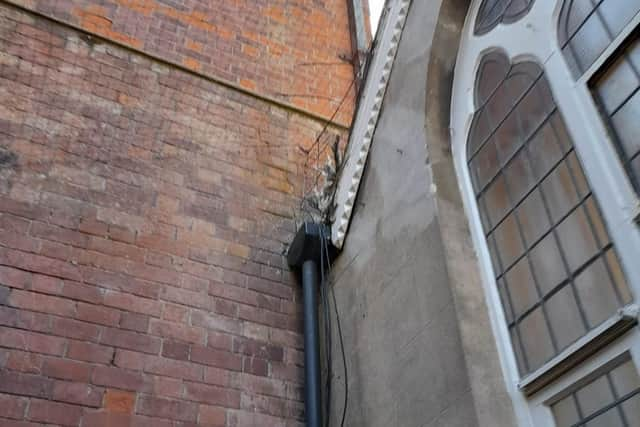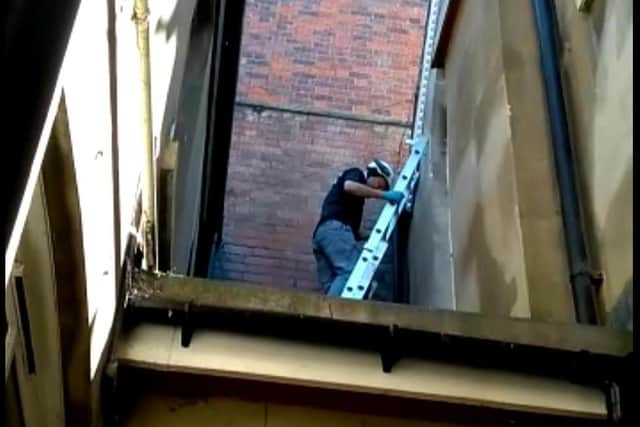Seagull saved from former Eastbourne church roof
and live on Freeview channel 276
The rescue was carried out by East Sussex Wildlife Rescue and Ambulance Service on Friday (July 16).
A spokesperson for the service said, “Rescuers Mark and Brian have been to the old church at Ceylon Place to rescue a gull which was entangled in netting which then freed itself and became stuck beneath the netting.
Advertisement
Hide AdAdvertisement
Hide Ad“After manoeuvring the ladders through the old building, which has been converted into flats, the rescuers were able to erect the ladders onto a flat roof in the middle of the building, then up to where the gull was.


“The gull is now on his way back to WRAS for attention.”
Following the incident, WRAS founder Trevor Weeks MBE spoke about how to help a young bird which is unable to fly.
Mr Weeks said, “Many young gulls are now in the process of fledging and learning to fly.
“If a member of the public sees a fledgling gull on the ground unable to fly and showing no signs of an obvious injury they should be left alone to continue learning to fly.


“The learning process can take several days.
Advertisement
Hide AdAdvertisement
Hide Ad“They can be placed up on a garage, shed, flat or low roof to help them on their way and to make them less vulnerable to predators, but shouldn’t be moved too far or their parents won’t know where they are.
“If you find one walking along a road, usher it into a garden or grass area off the road so it is safer.
“They should only be taken away from their parents as a very last resort.”
Mr Weeks explained that fledglings are gulls which are fully feathered, with no fluff on their back or stomach.
At rest, fledglings’ long flight feathers on their wings also cross over above the base of the tail, according to the WRAS founder.